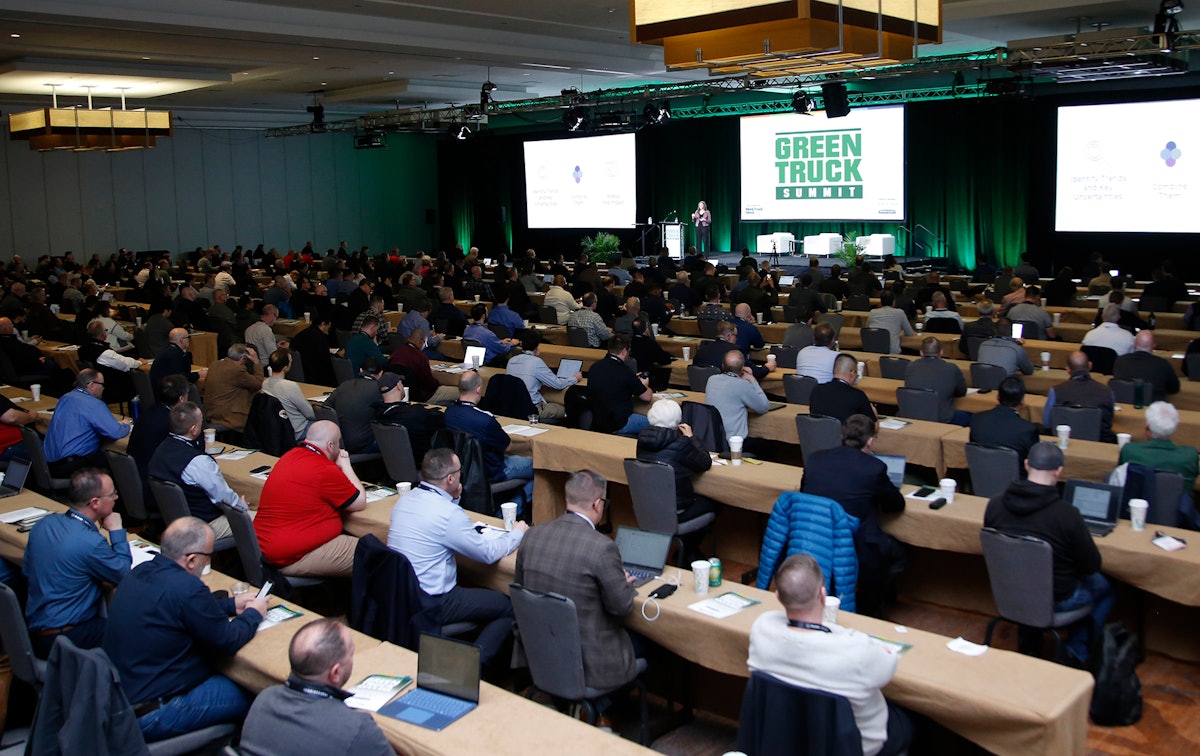Running from March 4-7, Work Truck Week 2025 came to a close last week. During the Green Truck Summit event, many trends emerged and attendees were educated on the various topics coming to light in the construction industry.
Here is a round-up of just a few of the trends we saw at Green Truck Summit.
1. Filling the Labor Gap with Technology
The construction industry has been facing a labor shortage for quite some time now. Besides the worry that not enough people want to work in the industry, there is the impending silver wave.
Adam Woods – general manager of innovation and product portfolio strategies at Link-Belt, discussed this issue at the Green Truck Summit Event during the “Beyond the Road: Autonomous Technology Insights From Agriculture, Construction and Mining Sectors” session.
“This labor gap shortage that I’m talking about … is a generation of operators that are beginning to retire, and an inflow and incoming of new operators who are a younger generation, who do not have the experience that the older generation is leaving with. Because of this, different companies, different manufacturers, may have different reasons that they are looking into autonomy, but the core of it is to drive productivity and efficiency,” said Woods.
The solution much of the construction industry has invested in to help the labor shortage is autonomous technology. With varying levels of autonomy, companies can invest in this kind of technology to help train and ease new workers into the industry.
2. Electric Powertrain Voltage
Alternative fuel options have run ramped through the construction industry and one of those alternatives is electricity/battery-electric power. As this has become more popular, companies have started to find the best powertrain voltage amounts to charge faster. Powertrains can typically have a wide range of varying voltage amounts, but experts are predicting the more popular options to come.
During the Green Trucks Summit “Applied Technology: Paving the Path to Emission-Free Work Trucks Through Industry Co-Creation” session, Kevin Otzenberger – product marketing manager at Daimler Truck North America, discussed the
“We see the advantages of 600 and up voltages for fast charging, which is going to be a critical piece of the puzzle going forward. So I think you’ll see less of the 400 much more of the 600 and 800 variety,” shared Otzenberger.
Although it isn’t always necessary to have higher voltage for faster charging, experts have found that there are benefits to the 600-800 voltage range.
3. Multi-Fuel Approach
Alternative power is popular in the industry but rather than just going forward with one option, it may be best to move forward with the one that works best with each type of vehicle. In combination with what works best, you’ll have to consider availability.
At Green Truck Summit, the “Achieving Zero-Emission Targets: Real-World Strategies and Key Takeaways for the Commercial Vehicle Industry” session helped educate attendees about the current situation with alternative fuel.
“You’re going to need a multi-fuel approach. It’s not one size fits all, there’s no silver bullet. You’re going to have to have a range of different fuels across different vehicle segments, across different parts of the market, [and] even within the U.S. – different states will have different energy availability,” said Alex Woodrow, managing director at Knibb, Gormezano & Partners (KGP).
The Green Truck Summit at Work Truck Week 2025 was able to highlight and explain some of the emerging trends in the sustainable and technological sectors of the industry. While these are only a few of the trends brought up, they are important ones to continue to monitor. Each of the topics applies directly to the construction industry and can impact contractors and company owners. Staying up-to-date and aware of the evolving construction landscape is important and valuable to the progress of your company and the industry as a whole.
View the original article and our Inspiration here


Leave a Reply